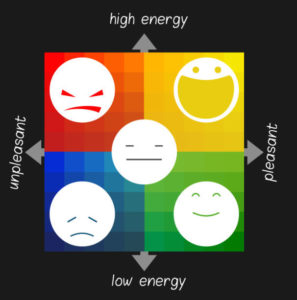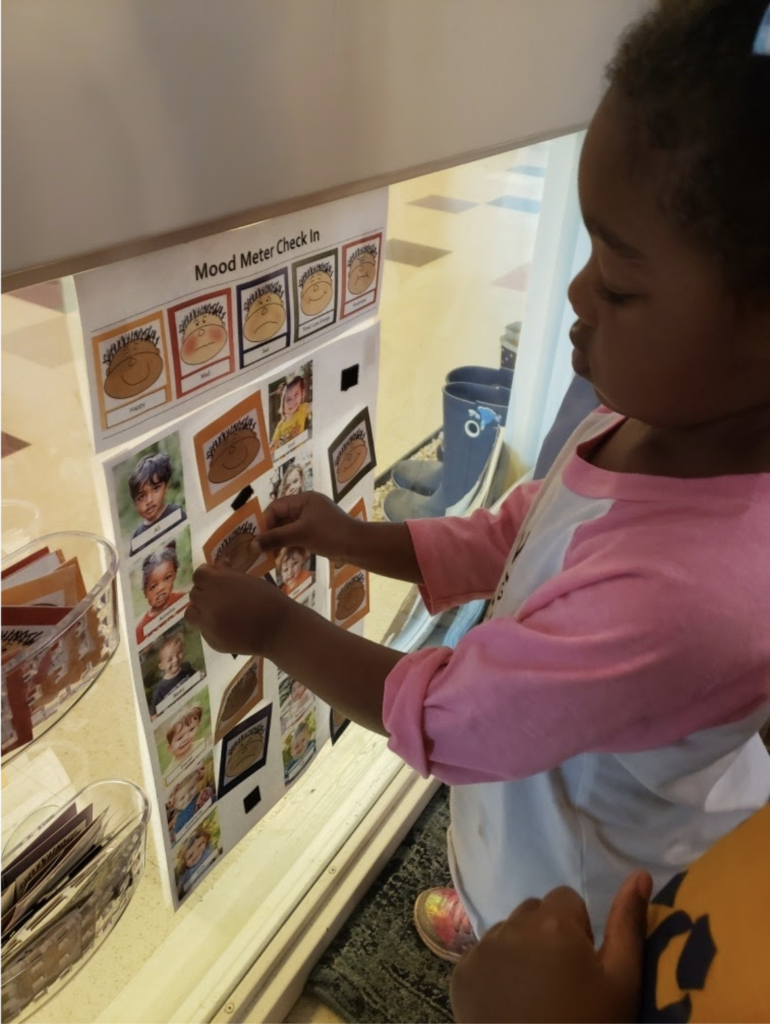 This post is by ELC toddler educator Amy Emert who has been with the ELC for about 3 years. Amy is the mom of three adult children, Nathan (24), Noah (21), and Natalie (19). She is currently teleworking with her husband, Kevin, and they have two kids home with them. If you would like to watch her intro, please see the video here.
This post is by ELC toddler educator Amy Emert who has been with the ELC for about 3 years. Amy is the mom of three adult children, Nathan (24), Noah (21), and Natalie (19). She is currently teleworking with her husband, Kevin, and they have two kids home with them. If you would like to watch her intro, please see the video here.
The days that we currently find ourselves in are days that cause all different types of emotional responses in people. Worry, fear, anxiety, and stress are just a few that we have heard families express in the past few weeks. So, how do we discuss with people of all ages not just what is happening around us, but, more importantly, how it makes us feel? How do we respectfully talk to children about emotions that are difficult for adults to process? This is a tricky subject for all of us to navigate. Maybe you’re struggling to talk to your children about all these feelings because you think they need you to put on a brave face. Or maybe you’re frequently overwhelmed and visibly stressed so you often find yourself sharing far more than you want. If we are being honest, we’ve all had tents in both camps recently. Finding the middle ground of those two extremes is not easy. To do so, we have to consider how we can express honest emotion in an emotionally unstable time.
The Power of Emotional Check-Ins
At the ELC we hold the belief that children are very capable beings. They are capable of handling big things and we do not talk DOWN to children, but TO children, even about hard things. In our older toddler classroom (2 and 3-year-olds) we utilize a tool called the mood meter to help children express how they are feeling. It is one of the ways we give children a voice when it can be hard to simply talk about their mood or their emotional state. The mood meter is an avenue for children and adults to wrap words around what they are feeling so they can better express themselves to someone else and not keep it all bottled up inside. For example, a child might enter our classroom after a stressful morning and they wanted to stay home instead of coming to school. The mood meter gives them a place to put a blue sad face beside their own picture as a way of saying, “I’m feeling sad.” Or during the course of the day, that same child is having a great time building block structures with friends so they return to the mood meter and exchange a blue sad face for a yellow happy face instead. Here’s a nice video of how the mood meter works. We’ve altered it a bit for our very young children, but if you’d like to see how this works for preschoolers, check out this post by preschool teacher Travis Burnett.
are feeling. It is one of the ways we give children a voice when it can be hard to simply talk about their mood or their emotional state. The mood meter is an avenue for children and adults to wrap words around what they are feeling so they can better express themselves to someone else and not keep it all bottled up inside. For example, a child might enter our classroom after a stressful morning and they wanted to stay home instead of coming to school. The mood meter gives them a place to put a blue sad face beside their own picture as a way of saying, “I’m feeling sad.” Or during the course of the day, that same child is having a great time building block structures with friends so they return to the mood meter and exchange a blue sad face for a yellow happy face instead. Here’s a nice video of how the mood meter works. We’ve altered it a bit for our very young children, but if you’d like to see how this works for preschoolers, check out this post by preschool teacher Travis Burnett.


The children in our program are taught that every feeling is valid and can be expressed in a safe space with caring adults around to support and guide them. And if you currently have young children (or know a young child) you know they can have BIG emotions and express them in BIG ways. That is why they need parents and caregivers around them to help them navigate their emotions. Right now we are all experiencing new, challenging things, and our children (young and old) are experiencing them along with us. However, our children do not have the same amount of life experience that adults have to make sense of our current reality. Relying on helpful tools during this time can help empower ourselves and our children to navigate our emotional states.
These new and challenging times call for us to not only traverse difficult things, but also have tough conversations. To me, emotional check-ins are more important now than ever before. We might not want to talk about the hard things, but it is necessary that we do it anyway. We all need people in our lives that we can have tough conversations with, and that tell us that it is okay to feel overwhelmed. That it is okay to not be okay! I listened to a Brené Brown podcast this morning and she said, “It is okay to be overwhelmed right now… We need to do check-ins with our words, because when we wrap words around our feelings it is very helpful.” As I reflect on our classroom practice of checking in with children and even as we continue to do virtual emotional check-ins with our classroom children during Zoom group times, I decided this would be a good practice for my own family to utilize and also worth sharing with others.
How to Do This at Home
I would begin by choosing your favorite version of a mood meter or creating your own together as a family. A quick Google search of “mood meter” will give you tons of suggestions and examples. Talk with your child about what the colors represent in terms of feelings and emotions. Ask your child to think about a time they were feeling mad, sad, worried, happy, excited, etc. and model which color those feelings correspond to. Do your own check-in with your child and show them where you are on the mood meter and ask them to do the same.
Honestly expressing our feelings is important. How often and what that looks like in your family is up to you. Once a day, once a week, in the morning at breakfast, or in the evening around the dinner table are all great options. You can customize your check-ins to work within your own family’s context. For my family, we are sharing about our days and how we are handling the stresses and “newness” in our world around the dinner table at night. This works for us because this is when we are in the same space at the same time. So, find what works for your family and try to be consistent with it.
Important Bullet Points to Remember:
- Be honest
- Be authentic
- Be age-appropriate – we are not going to share the same information with our children the same way in which we share with our partner, but children still need to see us expressing emotions in ways that are appropriate for their age
- Be a good example – trying to hide our emotions doesn’t allow our children to learn how to properly express their own emotions
- Remember that every feeling is valid – instead of trying to change how others are feeling, we want to give them a safe place to share their feelings
- And as Brené Brown says, “Have the same amount of passion for listening as you have for being heard”
Additional Resources
Yale RULER Center for Emotional Intelligence
Zero to Three: How to talk to children about the corona virus